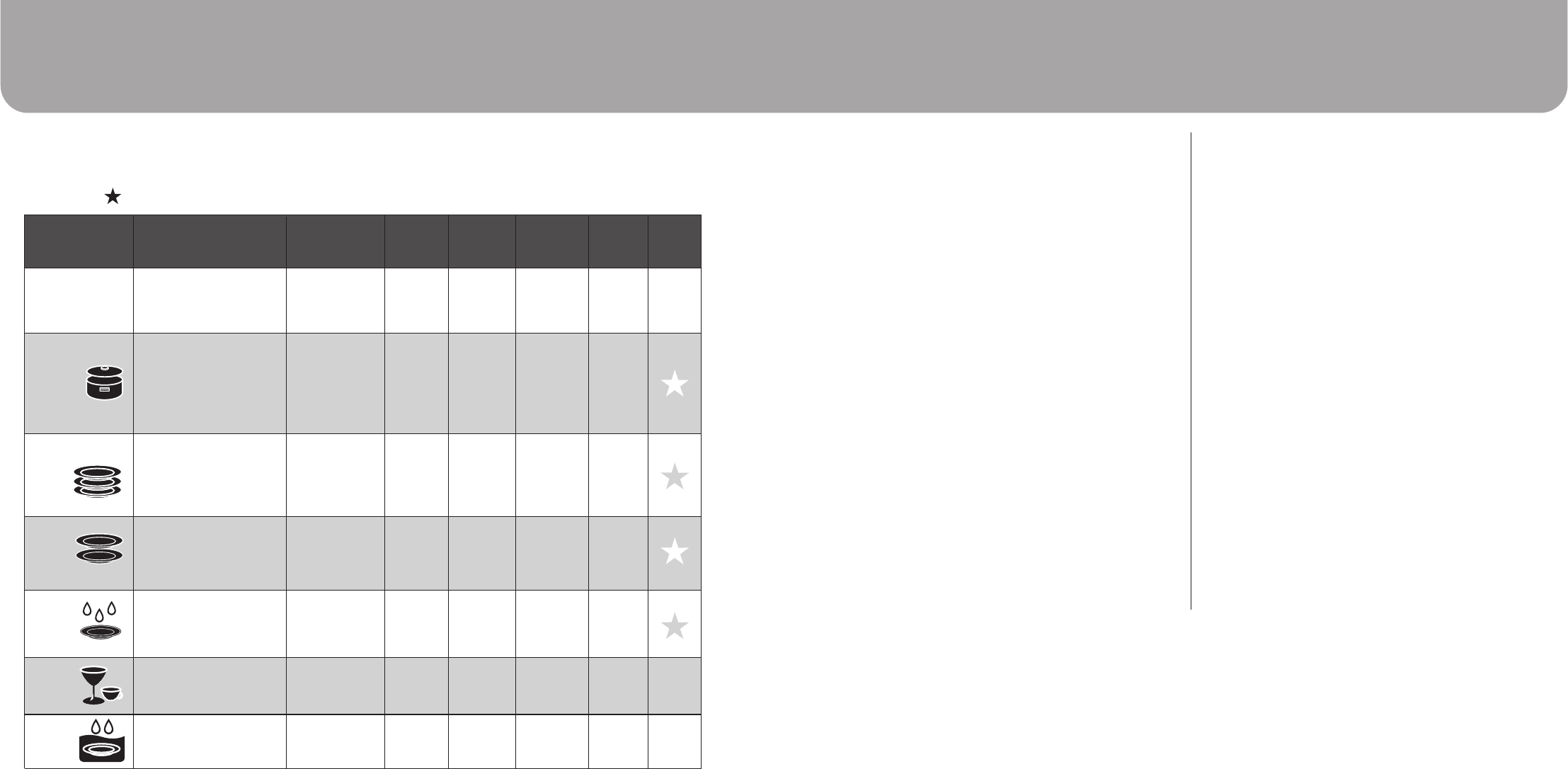
Using Your Dishwasher Installation
Positioning the Appliance
Position the appliance in the desired location. The
Ÿ
back should rest against the wall behind it, and the
sides, along the adjacent cabinets or walls. The
dishwasher is equipped with water supply and
drain hoses that can be positioned either to the
right or the left sides to facilitate proper installation.
Put the dishwasher on the slide rails supplied.
Ÿ
Affix the condensation strip under the cabinet
Ÿ
bench top. Ensure the condensation strip is flush
with the edge.
Water Outlet
Connect the water drain hose. The drain hose must
Ÿ
be correctly fitted to avoid water leaks. Ensure that
the water drain hose is not kinked or squashed.
Extension Hose
If you need a drain hose extension, make sure to
Ÿ
use a similar drain hose.
It must be no longer than 4 metres; otherwise the
Ÿ
cleaning effect of the dishwasher could be
reduced.
Syphon Connection
The waste connection must be at a height of
Ÿ
between 40 cm (minimum) and 100 cm (maximum)
from the bottom of the dish. The water drain hose
should be fixed by a hose clip. The free end of the
hose must not be immersed in water.
Aquasafe Connection
The Aquasafe System is a safety valve system,
Ÿ
preventing you from water leaks. If the water inlet
hose starts to leak during a wash cycle, the safety
valve cuts off the running water. Do not immerse the
water inlet hose or the safety valve in water,
because the electrical cable for the safety valve is in
the double-walled water inlet hose.
If water inlet hose or the safety valve is damaged,
Ÿ
remove the main plug immediately.
Do not enlarge or shorten the inlet hose because it
Ÿ
contains electric parts.
STARTING A WASHING PROGRAM
Wash Cycle Table
NOTE: Star ( ) means the need to fill rinse into the Rinse Aid Dispenser.
12
Detergent
pre/main
Cycle Selection
Information
Program
Running
time
(Hrs/Mins)
Water
(L)
1:30
Energy
(Kwh)
1.2
Rinse
Aid
3-in-1
5/27.5g
5/27.5g
3in1
For normally soiled loads,
such as pots, plates,glasses
and lightly soiled pans.
standard daily cycle.
Pre-wash(50°C)
Pre-wash
Wash (65°C)
Rinse
Rinse
Rinse (55°C)
Drying
Pre-wash(50°C)
Wash (50°C)
Rinse
Rinse (65°C)
Drying
Wash (40°C)
Rinse
Rinse (45°C)
20g.
/
Pre-wash(50°C)
wash(50°C)
rinse(70°C)
drying
2:37
2:41
54
1:10
1.2
1.4
0.45
0.8
22
16
5/27.5g
Rinse
Rinse
Rinse (50 )
Drying
Wash (55°C)
°C
2:07 0.87 13.65
8
12
Description
of Cycle
Pre-wash
Wash (40°C)
Rinse
Rinse (60°C)
Drying
/
8
4
0.01
Pre-wash
Heavy
Normal
(AS/NZS 2007. 1 )
Intensive
Rinse
Rapid
Soak
For the heaviest soiled loads,
such as pots,pans,casserole
dishes and dishes that have
been sitting with dried food
on them for a while.
For heavy soiled loads,
such as pots, plates,
glasses and lightly soiled
pans. standard daily cycle.
For normal soiled loads,
such as plates, glasses,
bowls and lightly soiled
pans.
For dishes that need to be
rinsed and dried only.
A shorter wash for lightly
soiled loads that do not
need drying.
To rinse dishes that you
plan to wash later that day.
NOTE:
* AS/NZS 2007.1: This program is the test cycle.
The information for comparability test in accordance with AS/NZS 2007.1, as follows:
Capacity: 14 setting.
Ÿ
Position Upper basket: Adjust to lower position
Ÿ
Rinse aid setting: 3
Ÿ
Open the door slightly 50mm to assist in drying of the dishes after every wash.
Ÿ
(Page 18).
Page 11Page 22


















